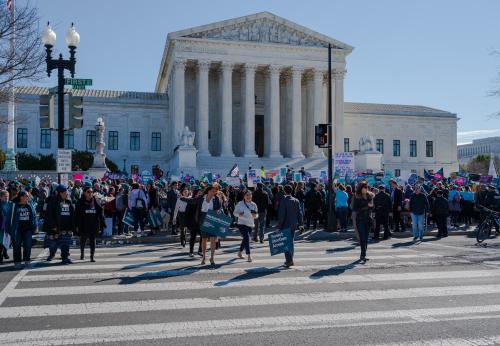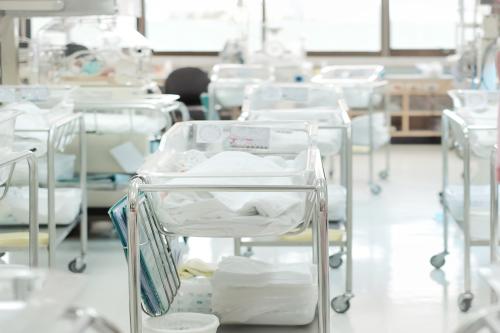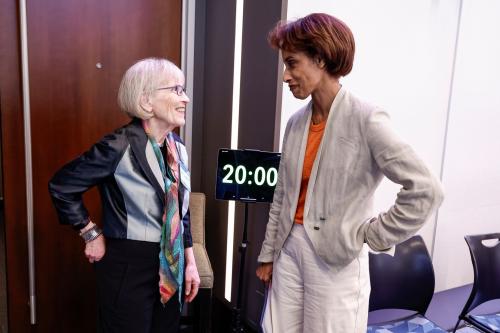Raising children has always been expensive. The COVID-19 pandemic undoubtedly made the prospect more daunting for many, with fluctuating food and housing prices and a tumultuous job market. As a result, many potential parents decided to wait. But as the pandemic recedes, inflation has emerged as a new cost concern for parents. At the same time, the failure of Build Back Better and the reversal of Roe v. Wade have left parents without needed support and made it harder for potential parents to make decisions about their futures.
It now costs more to raise a child
In 2017—years before the pandemic and during an extended period of very low inflation—the U.S. Department of Agriculture (USDA) projected that the average total expenditures on a child from birth through age 17 would be $284,594. This estimate assumes an average inflation rate of 2.2 percent and does not include the expenses associated with sending a child to college or supporting them during their transition to adulthood. Since 2020, the inflation rate has skyrocketed—it was 8.5 percent as of July 2022—in part due to supply-chain issues and stimulus spending packages that put more cash into Americans’ pockets. The Federal Reserve has now raised interest rates substantially in an attempt to control inflation.
Due to higher inflation, a middle-income married family with two children will now spend $26,011 more to raise a child to the age of 17.
In a new analysis,[1] we looked to the 17-years between 1980 and 1997, another period of substantially elevated inflation rates. The average Consumer Price Index increase during that period—which included a decline in inflation following Fed actions—was 4 percent. We then re-calculated the projected cost of raising a child assuming a 4 percent inflation rate from 2021 to 2032. We estimate that total average family expenditures on a child born in 2015 to a middle-class family with two children, adjusted for higher expected future inflation, would be $310,605. Due to higher inflation, a middle-income married family with two children will now spend $26,011 more to raise a child to the age of 17. This cost increase presents an even heavier burden for low-income parents and families, for whom expenses such as food, housing, and gas comprise an even larger portion of their income.
Prospective parents face financial trade-offs
As we saw at the height of the pandemic, these higher costs may lead many prospective parents to wait to have children or decide not to have children at all. In 2021, 44 percent of non-parents of child-rearing age said that they were unlikely to have children someday, according to a Pew Research Center survey. That estimate is up seven percentage points from 2018. Other parents may decide to make trade-offs, whether that means having fewer children, moving to less expensive areas, or working longer hours.
Prospective parents are faced with these tradeoffs in part because, unlike other advanced nations, the United States provides far less assistance in the form of child allowances, child care, pre-K, and paid family leave. There was some hope for additional support through President Biden’s Build Back Better (BBB) Act, which would have increased subsidies for child care, introduced a federal paid leave plan, and permanently codified the expanded Child Tax Credit, which alone would have cut child poverty by about 40 percent. However, the BBB Act has been abandoned. In its place Congress passed the Inflation Reduction Act, which did not include any direct support for new parents.
Is the choice to raise a child really a choice?
For those who don’t have resources, these tradeoffs aren’t easy to make. Half of women who had an abortion in 2014 were living below the poverty line and/or experiencing a disruptive life event, like losing a job or falling behind on rent. With Roe overturned, 17 states have restricted or completely banned abortion. More states are expected to follow suit, and if they do, more than half of women in the United States will lose access to abortion, and the number of unplanned births will likely increase in the coming years.
The Supreme Court’s reversal of the precedent set in Roe means that for women across the country, choosing if and when to have a child will be much more difficult. Many of the same state governments that took away the choice of whether and when to become a parent have done nothing to reduce the cost of having a child. In fact, the states that are restricting women’s right to choose are also the states where children have some of the worst outcomes and where the government spends the least to support them.
Without additional federal policies like those included in BBB, the United States lacks the infrastructure to adequately support parenthood. Meanwhile, women who have lost their right to make decisions about becoming parents will be stuck paying the increased bill.
Footnotes
[1] Read our appendix for more detailed information on this estimate.
The Brookings Institution is financed through the support of a diverse array of foundations, corporations, governments, individuals, as well as an endowment. A list of donors can be found in our annual reports published online here. The findings, interpretations, and conclusions in this report are solely those of its author(s) and are not influenced by any donation.









Commentary
It’s getting more expensive to raise children. And government isn’t doing much to help.
August 30, 2022